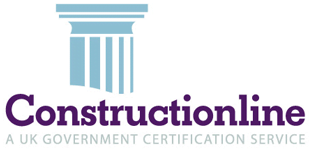In many homes, dampness is primarily due to neglect, insufficient ventilation, and, in older structures, ineffective damp proofing, exacerbated by factors like high ground levels. Newer homes, with limited natural ventilation and multiple occupants, can experience condensation-related dampness.
Older houses may lack a damp proof course or have one that’s no longer effective due to various factors, such as changes in ground levels, renovation damage, or built on slopes and hills where traditional damp-proofing methods may fall short of modern standards.
Common causes of home dampness include:
- Leaks
- Faulty rainwater systems
- Roof leaks
- Condensation due to poor ventilation
- Elevated ground levels
A Damp Proof Course (DPC) is a protective barrier placed at the base of a wall to stop water from rising from the ground into the wall. Older buildings usually didn’t have DPCs, but they became common around 1875. In the past, DPCs were often made from slate, but nowadays, they’re typically made of plastic.
When a new DPC is needed, it’s installed by drilling into the walls and injecting a waterproof liquid or cream. This creates a waterproof barrier inside the wall to prevent moisture from seeping in.
Damp walls can cause problems like timber decay, ruined decorations, and damaged plasterwork. So, it’s essential to address dampness issues to protect your home.
Each damp issue is unique in terms of the necessary repairs and the scale of damage. If you want an estimated cost and to identify affected areas for rising damp, contact us today for more information.
Identify rising damp through wet spots on lower walls; verify with a moisture meter or seek professional assessment.
Damp proofing prevents moisture penetration, while waterproofing creates an impermeable barrier against water.
Wet rot is a type of fungal decay that occurs in timber when it becomes excessively moist due to leaks, plumbing issues, or high humidity.
Look for darkened, softened, or cracked timber with a musty odor. You might also notice fungal growth on affected wood.
The most common causes of boiler breakdowns include issues with the thermostat, pressure problems, faulty components such as valves or pumps, a malfunctioning ignition or pilot light, limescale buildup, and problems with the boiler’s internal wiring. Regular maintenance and servicing can help identify and address potential issues before they lead to a breakdown.
Properly maintain your property, fix leaks promptly, ensure good ventilation, and treat timber with preservatives.
Yes, if the moisture source remains untreated, wet rot can spread to adjacent areas of your home.
Dry rot is a more destructive fungal decay that thrives in damp conditions. Unlike wet rot, dry rot can spread through non-timber materials.
Look for reddish-brown spore dust, mycelium (cotton wool-like growth), and shrinking, cracking, or brittle timber.
Treatment is possible, but it’s essential to address the moisture source and remove affected timber. Professional assessment is recommended.
To prevent dry rot, ensure adequate ventilation, promptly address leaks, and maintain proper building upkeep. Regular inspections aid in early dry rot detection.
Woodworm is the larval stage of various wood-boring beetles. It’s a problem because it can damage wooden structures over time.
Look for small round exit holes in wood, fine powdery dust (frass), and weakened or crumbling wood.
No, not all cases require treatment. It depends on the severity of the infestation and the type of woodworm.
Treatment typically involves applying insecticides, fumigation, or heat treatment to kill the woodworm larvae.
We are available Monday to Friday 8:00 AM to 5:00 PM
We provide comprehensive property services in London, Hertfordshire, Bedfordshire, Cambridgeshire, and Essex. Our offerings encompass a wide range of solutions, including basement and cellar tanking, slurry coat waterproofing, rising damp control, condensation management, timber treatments, flood restoration, structural waterproofing, and more. We’re your trusted source for property care and improvement.
Call Us (Hertfordshire Office)
01707 938100











